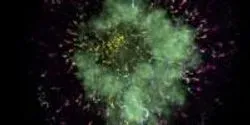Lab Leadership

Child Psychiatrist David Levy introduced the term "sibling rivalry" in 1941. Self-explanatory in its terminology, the concept of sibling rivalry is easy to grasp. The mechanism of employee rivalry works essentially the same way, with the employees in a competitive relationship, striving for greater approval from their employer or manager.

The Innovation Forum (www.inno-forum.org) is launching their first annual Innovation Leaders Conference to be held at Cambridge University, UK on February 27th and 28th 2014.

The most tweeted peer-reviewed articles published between 2010 and 2012, and the trends associated with their social media success, have been identified by Stefanie Haustein at the University of Montreal's School of Library and Information Science.

Two exceptional research images captured at Indiana University’s Light Microscopy Imaging Center are among the 15 finalists in the international GE Healthcare Life Sciences 2013 Cell Imaging Competition. The IU center won the competition last year with an image of a dividing mammalian cell and could do so again if enough votes from scientists and the public are cast online by the Dec. 20 competition deadline.

We first discussed the impact of social media on the sciences in April, 2011. Then, 100 percent of lab managers admitted to never having used flickr and over 80 percent hadn’t opened a Facebook account. Revisiting the topic in September 2012, we said that getting a grip on social media remained a challenge. “Untamed and unpredictable, it rolls like a cyber tsunami, sweeping and reordering the communication landscape.” This month we return to the topic again and, wow, what a difference 15 months can make.

Despite working in more routine and less autonomous jobs, having fewer close friends at work, and feeling less supported by their coworkers, blacks report significantly more positive emotions in the workplace than whites, according to a new study in the December issue of Social Psychology Quarterly.

Logically, one would think that once SWOT (Strengths, Weaknesses, Opportunities, Threats) analysis is learned, people and teams would rise to new heights of productivity and team synergy. However, since that is the rare case and not the norm, perhaps changing the focus and methodology of SWOT is in order. “Analysis paralysis” occurs when a team becomes so lost in the process of examining and evaluating the elements of SWOT that they are unable to make a decision or change a process using the new information.











